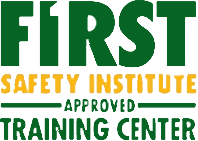Fire Extinguisher Training

The Fire Extinguisher course is designed to train individuals in the use of portable fire extinguishers in the workplace. It is designed to meet Occupational Safety and Health Administration (OSHA) training regulations.
Audience
Individuals requiring training to comply with occupational safety regulations, or anyone desiring training to improve the overall safety of their environment.
Course Content
![]() Introduction and Fire Extinguisher Basics
Introduction and Fire Extinguisher Basics
![]() Fire Extinguisher Use using P.A.S.S technique
Fire Extinguisher Use using P.A.S.S technique
![]() Maintenance and Testing of Fire Extinguishers
Maintenance and Testing of Fire Extinguishers
Course Format
Instructor-led standardized instructional system with video and skills based demonstration in a classroom environment.
Bullex Bulls Eye allows trainees to fight digital fires using laser driven infrared extinguishers that provide a dynamic and realistic simulation.
Certification
Course Completion Card is valid for one year
Bloodborne Pathogen Training
The Bloodborne Pathogen Training Course is a classroom course that teaches employees how to protect themselves and others if exposed to blood or blood-containing materials. It is designed to help meet Occupational Safety and Health Administration (OSHA) training regulations when paired with site-specific instructions.
Audience
This course is designed for anyone with a reasonable chance of coming into contact with bloodborne pathogens such as
![]() Correctional Officers
Correctional Officers
![]() Childcare workers
Childcare workers
![]() Security guards
Security guards
![]() Maintenance workers
Maintenance workers
![]() Laboratory Workers
Laboratory Workers
![]() School personnel
School personnel
![]() Hotel housekeepers
Hotel housekeepers
![]() Health and fitness club staff
Health and fitness club staff
![]() Tattoo artists
Tattoo artists
![]() Emergency Response Teams
Emergency Response Teams
Course Content
The Bloodborne Pathogens program covers:
![]() OSHA Bloodborne Pathogens Standard
OSHA Bloodborne Pathogens Standard
![]() 29 CFR 1910.1030 Specific Bloodborne Pathogens:
29 CFR 1910.1030 Specific Bloodborne Pathogens:
– Hepatitis C Virus
– Human Immunodeficiency Virus (HIV)
![]() Transmitting Bloodborne Pathogens
Transmitting Bloodborne Pathogens
![]() Your Employer’s Exposure Control Plan
Your Employer’s Exposure Control Plan
![]() Recognizing the Potential for Exposure
Recognizing the Potential for Exposure
![]() Methods to Control Occupational Risk
Methods to Control Occupational Risk
![]() Using Personal Protective Equipment (PPE)
Using Personal Protective Equipment (PPE)
![]() Hepatitis B Immunization
Hepatitis B Immunization
![]() When an Exposure Occurs
When an Exposure Occurs
![]() Housekeeping
Housekeeping
![]() Communicating a Hazard in the Workplace
Communicating a Hazard in the Workplace
Course Format
Classroom-based (instructor and video, with skills practiced throughout)
Certification
Participation Certificate
Oxygen Administration Training
Oxygen is a very useful adjunct to first aid care. It is safe and easy to administer and improves the patient’s condition and sense of “well being.”
The Oxygen Administration Training Course provides healthcare workers and other professionals with vital information about when to use oxygen, safety precautions, and hands on experience with the various pressure vessels, oxygen adjuncts and equipment.
Course Duration
1 Hour
Certification
Course Completion Card is valid for one year
Course Content
![]() Benefits and Indications for Emergency Oxygen
Benefits and Indications for Emergency Oxygen
![]() Integrating the Use of Emergency Oxygen
Integrating the Use of Emergency Oxygen
![]() Emergency Oxygen Delivery Systems
Emergency Oxygen Delivery Systems
![]() Oxygen Delivery for Breathing Patient
Oxygen Delivery for Breathing Patient
![]() Oxygen Delivery for Non-breathing Patient
Oxygen Delivery for Non-breathing Patient
![]() Safety Considerations for Emergency Oxygen Use
Safety Considerations for Emergency Oxygen Use
Stop the Bleed
Uncontrolled bleeding is the number one cause of preventable death from trauma This course teaches what everyone should know to stop bleeding after an injury from an accident or intentional harm.
Course Duration
1 Hour
Course Content
![]() Primary principles of trauma care response
Primary principles of trauma care response
![]() Ensure your own safety
Ensure your own safety
![]() Look for life-threatening bleeding
Look for life-threatening bleeding
![]() Compress and control
Compress and control
– Direct pressure
– Packing the wound
– Tourniquets
